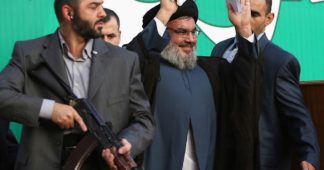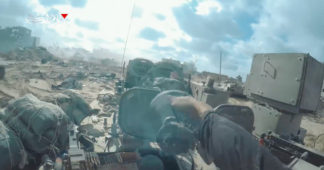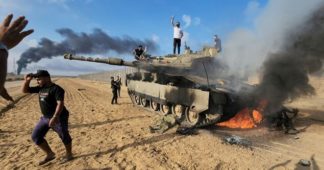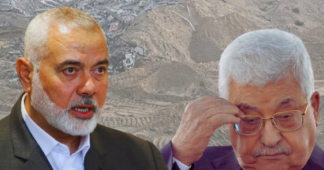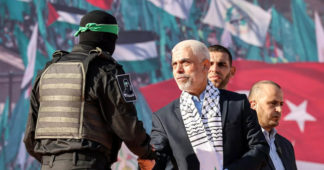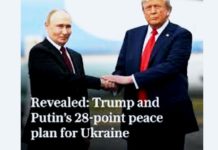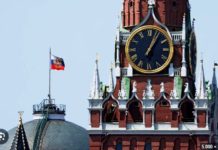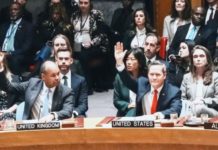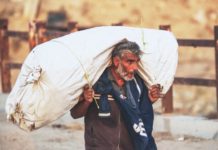By Hassan Fakih
Oct 6, 2025
Two years after October 7, the Palestinian Resistance continues to defy “Israel’s” occupation, reshaping the struggle for freedom in Gaza and reigniting the global decolonial movement.
We’ve officially reached the second anniversary of October 7. Two years since the shock of the early morning videos of Palestinian Resistance fighters flying over the prison walls, which had isolated Gaza for decades.
Two years of war, the likes of which have never been documented for the world to see so clearly before.
Two years of international support and outcry, Western political gymnastics, and the shining light of honorable fighters willing to risk everything they have for freedom.
Two years of real-world results through the arms of the Resistance.
Prior to October 7, the freedom of Palestine was kept to papers being signed in international organizations without reasonable Palestinian involvement and skirmishes between an oppressive regime and those who seek a breath of fresh air.
What October 7 showed is that freedom is brought about through direct action, not by sitting back and waiting for the oppressive hand to stop beating you.
October 7 gave a nostalgic air to the decolonial cause, not seen on a mass scale since the Cuban and Algerian revolutions, which kicked out their oppressor by their own means and succeeded in bringing about sovereign nations capable of making their own decisions.
The sights from the early morning operations, to the continuous battles of liberation throughout these two years, solidified to the world that such movements are alive and well, and not just something to read about in the history books.
October 7 allowed for a shift in the “Israel”-Palestine narrative, showing that the underdog was still capable of confronting the regime that seeks to remove it from existence.
The Flood
At 6:31 am local time, October 7, 2023, the sound of air raid sirens was reported to be coming from Gaza’s surrounding settlements and Tel Aviv (Occupied Jaffa). Palestinian media, 20 minutes later at 6:51 am, reported the launch of dozens of rockets against the occupied territories in succession.
Videos of Palestinian Resistance fighters carrying out operations against Israeli soldiers soon followed the breaking news bulletins, which brought a breath of fresh air to modern anti-imperialist movements.
The now martyred Al-Qassam Brigades Chief of Staff, Mohammad Al-Deif, released a 10-minute statement as the dust was still being kicked up by the rushing current that would be dubbed Al-Aqsa Flood. Al-Qassam Brigades’ Spokesperson Abu Obeidah solidified the operation shortly after by stating, “This enemy will follow [the operation] with astonishment when it wakes up from its shock and realizes the extent of its disappointment … Know that Al-Aqsa Flood will be carried out as planned.”
Palestinian Islamic Jihad’s (PIJ) now martyred Spokesperson Abu Hamza would also later add, “Today, we at al-Quds Brigades and the Resistance record a new chapter of victory and breaking the prestige of the enemy entity and its defeated army, during which our heroes rendered the enemy submissive and humiliated, feeling death everywhere. What we called for the enemy and its settlers to leave our land peacefully did not happen, so killing became our way.”
“Thanks to God and through a series of operations behind enemy lines, as part of the Al-Aqsa Flood operation, we and the Resistance caused a historic and resounding shock, proving the truth of our statement that this cowardly enemy is dust and can be defeated and broken,” Abu Hamza added.
Al-Qassam Brigades publish video footage of its Saqr military unit that took part in #OperationAlAqsaFlood.#Palestine #Gaza #طوفان_الأقصى pic.twitter.com/2aHwxCs26x
— Al Mayadeen English (@MayadeenEnglish) October 7, 2023
Crack in the dam of Israeli security
Ultimately, the initial successes of the Palestinians could be written about to no end. But the main thing that is to be focused on, and continued to be talked about, is the successful annihilation of the Israeli security facade, which continues to haunt Israeli society to this day.
Israeli society has so often relied on its technological advances to deter everything it considers a threat. The policy of fear ensured that settlers didn’t see a six-meter wall, sprinkled with armed military personnel, heavy vehicles, and aerial surveillance to be enough protection; they had to further add cameras and auto-fire turrets as an added layer.
This falls under the policies of Israeli Prime Minister Benjamin Netanyahu, who has, since taking office, relied on and inflated Israeli fears to boost the entity’s security capabilities.
Per Israeli media, “The massive attack at dawn Saturday came under cover of a barrage of missiles … and involved sniper fire, explosives dropped from drones on lookout and communication towers, and bulldozers that ripped through the six-meter (20-foot)-tall double fence barrier at an estimated 30 places along the border.”
The Palestinian drones that took out cameras, turrets, and destroyed lookout points at several locations on the border fence were the crack that led to the dam breaking; this essentially broke the situational analysis that the Israeli Air Force relies on, forcing pilots to fly blind.
#Watch | Footage shows Palestinian Resistance destroying a Merkava tank in the #Gaza Strip.#AlAqsaFlood #طوفان_الأقصى
#Palestine pic.twitter.com/PpylCXG8Gj— Al Mayadeen English (@MayadeenEnglish) October 7, 2023
This allowed the initial moments of the operation to succeed as well as they did because, after surveillance technology, the Israeli Air Force is the most powerful asset the entity has. Pilots, as a result of taking out their eyes on the ground, could not hit what they could not see.
Through its overreliance on technology, “Israel” had effectively shot itself in the foot. It allowed the Palestinians time to carry out their operation in succession, taking Israeli soldiers captive and returning, while Zionist foot soldiers were still dumbfounded and scattering to compile reinforcements.
The War
The Palestinian Resistance gained a major victory in the realm of the media game during the war, whereas the Israelis were focused on seeking what would later be a failed public sympathy attempt, the Palestinians gave us an on-the-ground look at operations against Israeli troops.
This was a tactic that covered two fronts, one as purely militaristic documentation and the other as a form of psychological warfare.
Hamas and PIJ, alongside other factions like the Popular Front for the Liberation of Palestine’s military wing, had their own respective military media channels that would document operations.
The recordings would show supporters of the Palestinian cause the successes of the fighters in their goals, boost morale across fighters and viewers, and put a thorn in the eyes of the Israelis, who have, since their occupation of Palestinian lands, underestimated the Palestinians’ capabilities against their more advanced technology.
Palestinian Resistance factions also showed the complexity of their operations through these videos, beyond battles, but on the manufacturing end.
Among the videos released were factory line productions of the Gaza-made al-Yassin 105mm rocket-propelled grenade (RPG), the al-Ghoul sniper, Rajoum MRL, and others.
What these videos showed was that the Palestinian Resistance was a much bigger and more organized group than the Israelis thought, and that they were capable of pulling off such large-scale manufacturing capabilities under the Israeli nose, unnoticed.
Source: Al Mayadeen English
We remind our readers that publication of articles on our site does not mean that we agree with what is written. Our policy is to publish anything which we consider of interest, so as to assist our readers in forming their opinions. Sometimes we even publish articles with which we totally disagree, since we believe it is important for our readers to be informed on as wide a speCtrum of views as possible.

